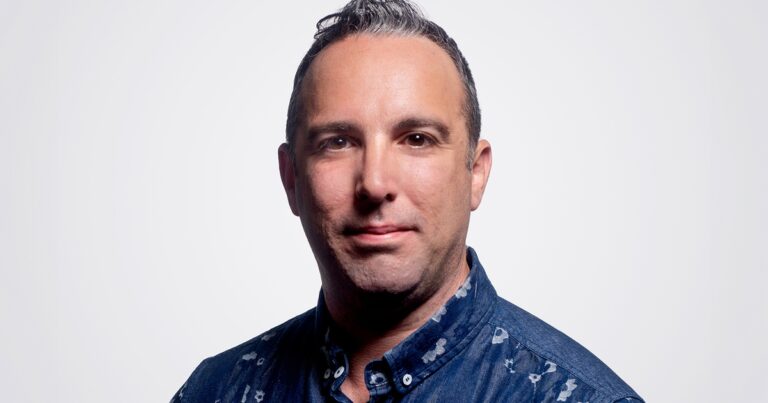Over the past year, the alternative investment universe witnessed the emergence of a new type of offering: partnerships between public-market asset managers and private-market ones that aim to combine their holdings in a single vehicle available to retail investors, such as an interval fund or a private-market ETF.
Last year, for example, Capital Group and KKR filed for registration of two public-private income funds, Capital Group KKR Core Plus and Capital Group KKR Multi-Sector. This May, Blackstone, Vanguard and Wellington Management revealed they planned to launch an interval fund that would combine assets from all three firms. The fund will allocate from 25% to 40% of its money to private markets and 60% to 75% to public assets.
So far, at least five team-ups of this sort have taken place, according to market research firm Morningstar. In addition to the Capital Group/KKR and Blackstone/Vanguard/Wellington partnerships, they include State Street Global Advisors’ target date funds with Apollo, BlackRock’s multi-market model portfolio and the Calamos Aksia Alternative Credit and Income Fund.
For the asset managers involved, the benefits of these types of partnerships are clear-cut. The public market managers can reap higher fees from private market investments, while the private asset managers gain access to a deeper pool of clients. In addition, partnerships of this type are easier to both create and dissolve than buying another firm or building out in-house capabilities, according to a recent note from Morningstar analysts Jason Kephart and Bridget B. Hughes.
But will working with these types of vehicles make sense for financial advisors and their clients? WealthManagement.com spoke to Kephart, senior principal, multi-asset strategy ratings, at Morningstar, to find out.
This has been edited for style, length and clarity.
WealthManagement.com: In your note, you talk about the advantages of doing these public/private partnerships for the asset managers themselves. But what might these offer financial advisors and their clients? We know that for most of these there is no track record to speak of because they are just starting out.
Jason Kephart: On the bright side, I think it is kind of a way for financial advisors who maybe haven’t dealt with private assets before or dealt directly with private asset managers to get somewhat more familiar as part of the product and process. Whether it’s a Capital Group, Wellington, Vanguard or State Street, maybe it’s somebody you are already comfortable working with and investing with. Maybe that helps ease that transition into private markets, and that’s what clients are looking for. So, on the one hand, it makes that part of it a little less daunting than going out directly to one of the private market firms where you don’t have an existing relationship with any of the sales team. That’s if we are being optimistic, that could be one of the potential advantages.
WM: And in terms of returns, how would these public/private asset partnerships compare to pursuing either a straight public market strategy or a straight private market strategy?
JK: A lot of the ones you see are kind of a hybrid approach, a public and private in the same wrapper, and that probably should land somewhere in the middle of just doing straight public or just straight private. I think it’s really being designed for financial advisors who haven’t had a lot of exposure to private markets before. So, having this mix, you have a lot more liquidity than you would if it were just private assets. What you get is not going to be higher returns, but it’s going to be higher liquidity. You could also have lower fees than you would with just a straight private fund. And [these advisors] may be less comfortable allocating directly to a private fund. Some of those may not even be as available to you—the Capital Group one doesn’t have any suitability requirements, but there are some KKR funds where you have to be an accredited investor to get in. So, there is some more access there.
WM: On the flip side, what should advisors keep in mind about the potential downside of these vehicles?
JK: First, you are obviously adding some complexity with private markets. Although there are lower fees than you would get in a straight private vehicle, the fees are going to be higher than you would get in the public market.
I think the big question that no one really has been able to answer yet is—is there enough demand from advisor clients for these types of products as you hear as much hype from asset managers? That’s something we really don’t know yet, if there is as much pent-up demand as the asset managers seem to think there is.
WM: How much demand do you think there might be for this type of product?
JK: There have definitely been a couple of products that have raised a lot of assets, like the Cliffwater Interval Fund, and Blackstone’s Private Credit Non-Traded BDC. But when you are trying to move down the wealth channel, we don’t have any evidence either way yet on broader adoption. It’s almost too soon to tell.
I think advisors should tread carefully. These are new products; they are structures advisors are probably not used to dealing with. Only having 5% quarterly liquidity may sound fine on paper. But if you get into a period like in 2022, maybe that’s not as much liquidity as you want. There is a lot to consider, and nobody should really rush into new things blindly just because they sound cool.
WM: A lot of these partnerships were announced last year. Given the current environment where the markets can have big swings every day, will this make it more challenging for the asset managers to push these products out into the market?
JK: Yes. What the asset managers would probably say is, “Look at how stable the net asset values are for the private markets; they are not nearly as volatile.” And that is true in the sense that’s what’s supported, but there is a clear question mark when you get into a bear market about how realistic are the valuations that you can transact that? In good times, it’s probably not as much of an issue. I think the real risk is, you get everyone trying to get their money out at once, and that’s when the liquidity dries up kind of fast. That’s what we saw with BREIT in 2022-2023, where they had to gate the fund. That’s the worst-case scenario. With BREIT, they got some funding, and they opened the gates again, so people are able to transact normally. But you can have really stable NAV that makes it look like everything is OK, but if there is enough selling pressure or enough market volatility, at some point, it’s not going to be as stable anymore. And probably at the worst possible time.
WM: We saw some of the big asset managers announce these public/private partnerships. Do you think that as time goes on, we’ll see more managers jump into this market?
JK: Absolutely. There is a lot of fee pressure in the industry, since everyone shifted more toward low-cost passive ETFs. Active management and equities have come under a lot of scrutiny, performance-wise, so I do think a lot of managers are looking for more ways to protect their profit margins. Having private markets with higher fees is definitely one way to do that.
And then, on the private credit side, you just see much higher yields than on the public credit side, and that appeals to some people. We don’t think you should just choose bond funds based on their yield, but some people really like high income.
WM: How long should we give these vehicles to get a sense of how they perform and whether they make sense for lower net-worth investors?
JK: There is no magic number, but you probably want to see how they perform through some kind of volatility, a little bit of a stress test. The other real component is, how do they handle it when and if there are net outflows? Right now, a lot of these funds are just getting positive inflows. For example, Cliffwater has money coming in pretty regularly, so they haven’t had to deal with periods when more people wanted to sell than buy. You want to see how they manage illiquidity through those kinds of periods. That would be a big confidence boost, but it could also be a long time before that happens.
WM: If you are a financial advisor and you are feeling brave and willing to invest in these vehicles right now, what kind of factors should you keep in mind when choosing between them?
JK: You want to do a check on whether the liquidity of the underlying asset matches the liquidity of the vehicle. Illiquid things in daily liquid products are a bad mix in general, so that’s something I would be cautious on and making sure that the managers are thinking of that liquidity component.
And we recently started rating semi-liquid funds like this. And we decided that there is so much risk management that needs to be done, so much trust you have that the valuation policies have credibility, so we think the firm rating, or what we call the “parent rating,” is more important for these funds than it would be for a large-cap growth fund. If it’s a public asset manager that’s trustworthy and has shown that they have a good track record and positive stewardship practices, like a Capital Group, a Vanguard, a Wellington, that gives those firms a big head start. There is more trust when it comes to investing in these. You might be able to sleep better at night.





